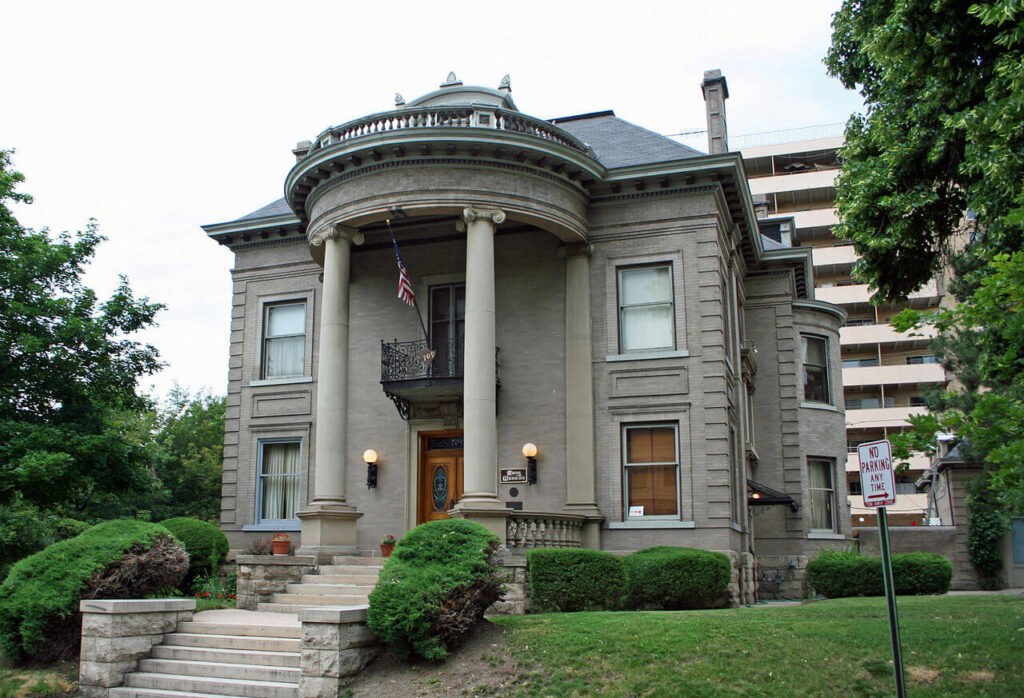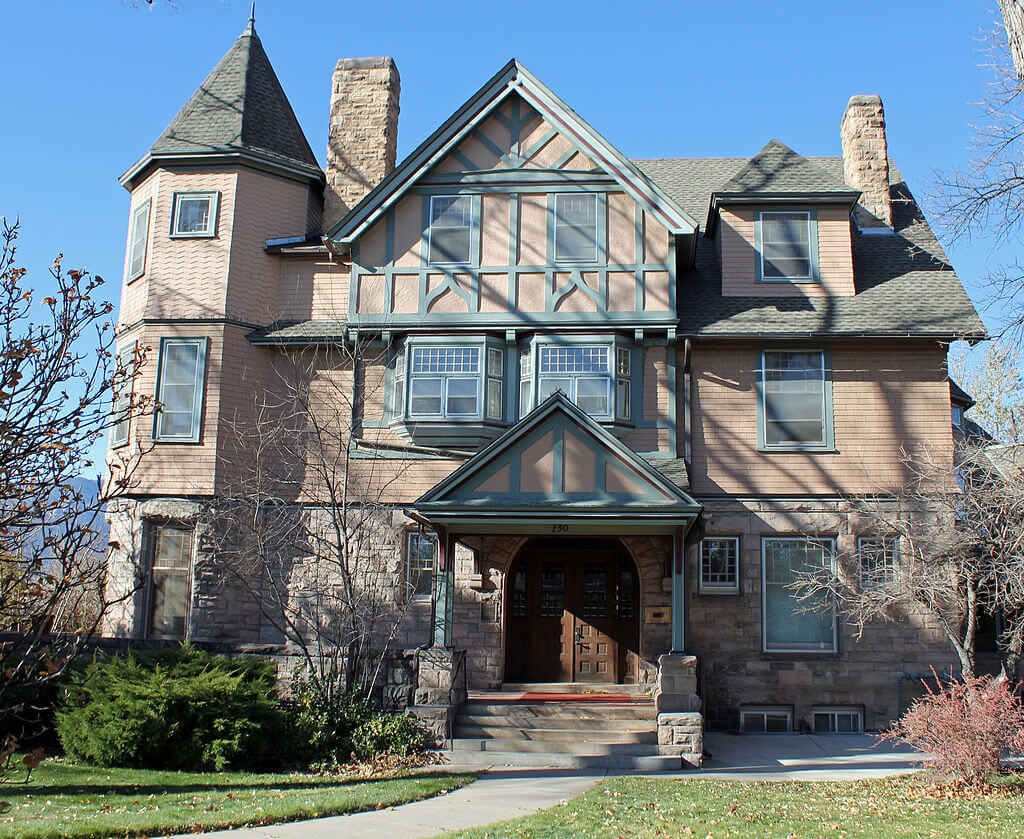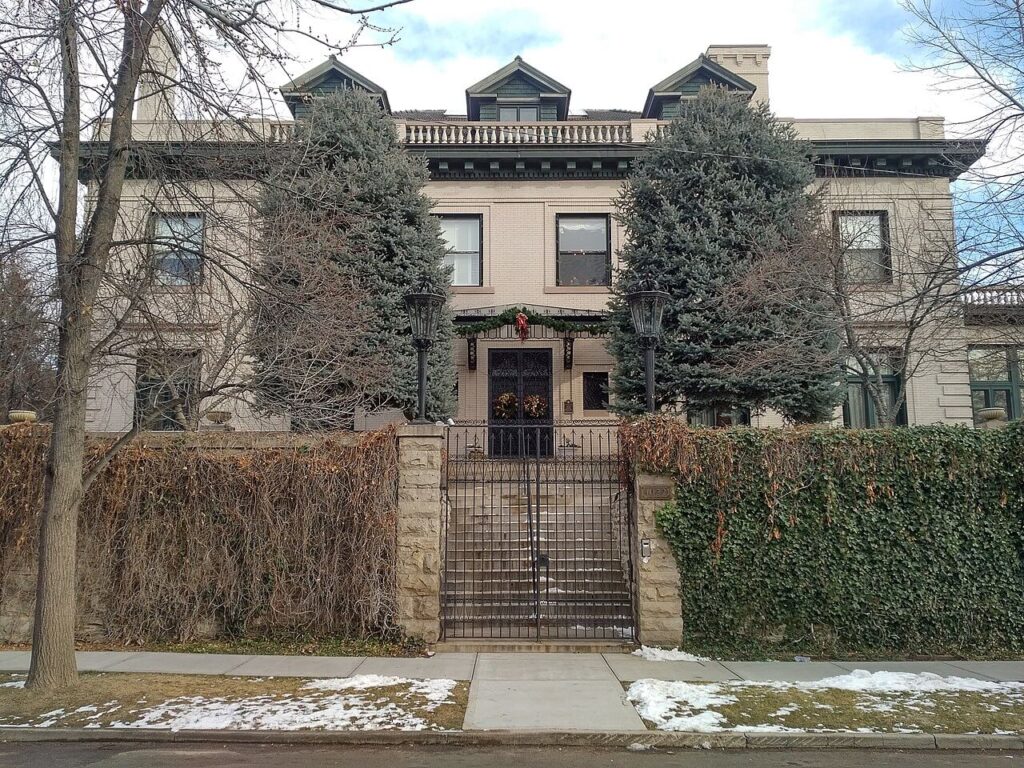If old houses, especially historic ones, fascinate you, you’ll enjoy Colorado’s rich collection of historic mansions, ranches, log cabins, and the fascinating stories that go along with them. Below is just a sampling of what you can expect to find if you decide to research Colorado’s colorful real estate history.
Adolph Zang House

The Adolph Zang Mansion is a 38 room Neoclassical brick and stone built in 1903. The Zang’s, father and son, owned the Rocky Mountain Brewery. Father, Phillip, purchased it in 1869, and son, Adolph, moved to Denver in 1886 to take over its management. Under his careful supervision, the brewery became one of the most successful west of the Mississippi.
When Adolph got ready to build, he called on Frederick Carl Eberly, the architect responsible for the Barth Hotel and Tivoli Brewery in Denver. Zang spared no expense. When completed, the home boasted seven glass painted windows created by one of the artists responsible for the stained glass in St. Patrick’s Cathedral, New York City. He added unique touches like a Parisian canvas ceiling in the ladies’ sitting room, a gold-leaf ceiling in the formal dining room, a third floor ballroom, and Tiffany chandeliers.
Address: 709 N Clarkson St, Denver, CO 80218
Briarhurst Manor- William B. Bell House

Manitou Springs is home to a pink sandstone Victorian built by Dr. William Bell. While construction was underway in 1872, Dr. Bell traveled to England to convince his bride-to-be to return to Colorado with him. She agreed as long as their children were born in England.
Cara Bell turned the Tudor Revival style mansion into the center of Colorado’s society. The Bells welcomed such distinguished guests as President Grant, President Theodore Roosevelt, and Oscar Wilde, who was in Colorado Springs as part of a lecture tour.
Fire claimed the house in 1886, and Mrs. Bell returned to England with her children and the prize painting, “Mount of the Holy Cross”, she managed to rescue from the blaze. The next year she returned to oversee the reconstruction of a bigger and better manor. When completed, it included a cloister, a conservatory, a classroom, and a library where the saved “Mount of the Holy Cross” was hung in a special place of honor.
Today five acres of the estate are used as a restaurant and as a venue for events. An additional two acres is the site of a bed and breakfast that incorporates the 1873 carriage house as part of its ambience. The formal gardens, designed over 100 years ago by Ferdinand Schneider, have been the backdrop for hundreds of weddings and receptions.
Address: 404 Manitou Ave, Manitou Springs, CO 80829, United States
Gwynne-Love House

In 1886, Edmiston Gwynne, a Londoner by birth, commissioned the architect, William B. Perkins, to design his Colorado Springs home in the Queen Anne style. Unfortunately, Gwynne died shortly after the home’s completion. When gold was discovered in 1891 at Cripple Creek, the Gwynne House was converted into a boarding house in order to accommodate the rush of prospectors who descended on the town.
In 1914, the Gwynne House became a private residence again when the Love family, originally of Indianapolis, purchased it. In the 1950s, it was once again converted into apartments. The Gwynne-Love House has been on the National Register of Historic Places and the Colorado State Register of Historic Places since 1987.
Address: 730 N. Cascade Ave., Colorado Springs (redeveloped)
Wurl Ranch
Northeast Colorado’s Sand Creek Park, Larimar County is home to historic Wurl Ranch and its 271 acres situated on a high mountain prairie. The collection of log structures located on the site was built between 1880 and 1883. They are still largely intact, a real testament to Wurl family craftsmanship.
There is a ranch style home with outbuildings that include a blacksmith shop, spring house, a log barn, and an original mountain schoolhouse. There’s also an artesian spring, beaver pond, and hay field. This ranch is listed on Colorado’s State Historical Register and is currently on the market with an asking price of $880,000.
Area: N County Road 89, Red Feather Lakes, CO 80545
Matthew Callahan Log Cabin

When it was first settled, Aspen was full of log cabins. Today, the Matthew Callahan cabin is one of the few left of the pre-mining era and the only one of this time period built with hand hewn logs. It is believed to have been built in the late 1800s when the Aspen area was filled with prospectors, miners, tradesmen, and merchants hoping to cash in on the silver lodes in the surrounding mountains.
Over the years most of the log cabins were demolished to make way for more modern cottages and larger wood and brick homes. The Callahan family continued to live in their log cabin for 65 years. The original structure was expanded at some point. The cabin was placed on the National Register of Historic Places in 1987.
Address: 238-200 S 3rd St, Aspen, CO 81611
Stoiber-Reed-Humphries Mansion

In 1907, Denver mining tycoon, Edward Stoiber, had a three story mansion built for his wife, Lena. Stoiber didn’t live to see the house finished, and in 1909, Lena married lumberman Hugh Rood. This marriage ended abruptly when Mr. Rood died in the sinking of the Titanic. Another Denver resident, Molly Brown, of Unsinkable Molly Brown fame, survived the disaster.
The house changed hands over the years with prominent Denver citizens, the Reeds and the Humphries, calling it home. Home for them was this massive nine bedroom, nine bath, three story with three dining rooms (the main dining room sits up to 50 guests), a 40 foot long drawing room, an elevator to the upper bedrooms, and a prohibition room. The basement comes with a theater stage, mosaic tile pool, and bowling alley. All of this splendor sits on nearly an acre of land backing up to Cheesman Park in Denver.
Back in 1907, Edward Stoiber paid $65,000 to have his wife’s dream home built. In 2005, a cable TV executive purchased the home for $3,000,000.
Address: 1022 Humboldt St, Denver, CO 80218
Molly Brown House

No list of Colorado’s historic homes would be complete without including the residence of one of Denver’s most famous citizens. Molly Brown was the daughter of Irish immigrants living in Missouri. Molly’s adventurous ways lead her to Leadville, Colorado as a young girl. She married J.J. Brown, a poor mining engineer, in 1886.
When J.J. struck gold at the Little Johnny mine, the Browns became instant millionaires. They moved to Denver and purchased a home on Pennsylvania Avenue (now street). Molly became an activist and ran for the state senate. In 1912 she boarded the R.M.S. Titanic with her daughter, Helen. Four days later the Titanic hit an iceberg and sank to the bottom of the Atlantic. Of the 2,435 passengers and 900 crew members, only 706 people survived. Molly was one of them, hence her nickname “the unsinkable Molly Brown”.
The house was designed by William A. Lang and built in 1880. Molly and her husband bought it for $30,000 in 1896. In 1902, it served as the Governor’s Mansion, and in 1926, Molly turned the mansion into a boarding house. Molly died in 1932, and the house sold for $6,000. Over the years it was a men’s rooming house, a Jane Hull House settlement, and an apartment house.
The mansion was almost demolished in 1970, but a group of concerned citizens raised enough money to restore it to its former glory. Today the home is a museum owned by Historic Denver, Inc. and open to the public. Many come to see if it’s true that Molly still haunts the halls.
Address: 1340 Pennsylvania St, Denver, CO 80203
Conclusion
Should the beauty of the style and setting of these homes inspire you to want to visit or look for a home in Colorado. you can start your search here: https://colorado-properties.com/property-search/. On Colorado-Properties.com, you have all the tools you need for your search. When you’re ready to speak with someone or schedule a view, let us know. We’re here to help you find your dream home at the right price.
